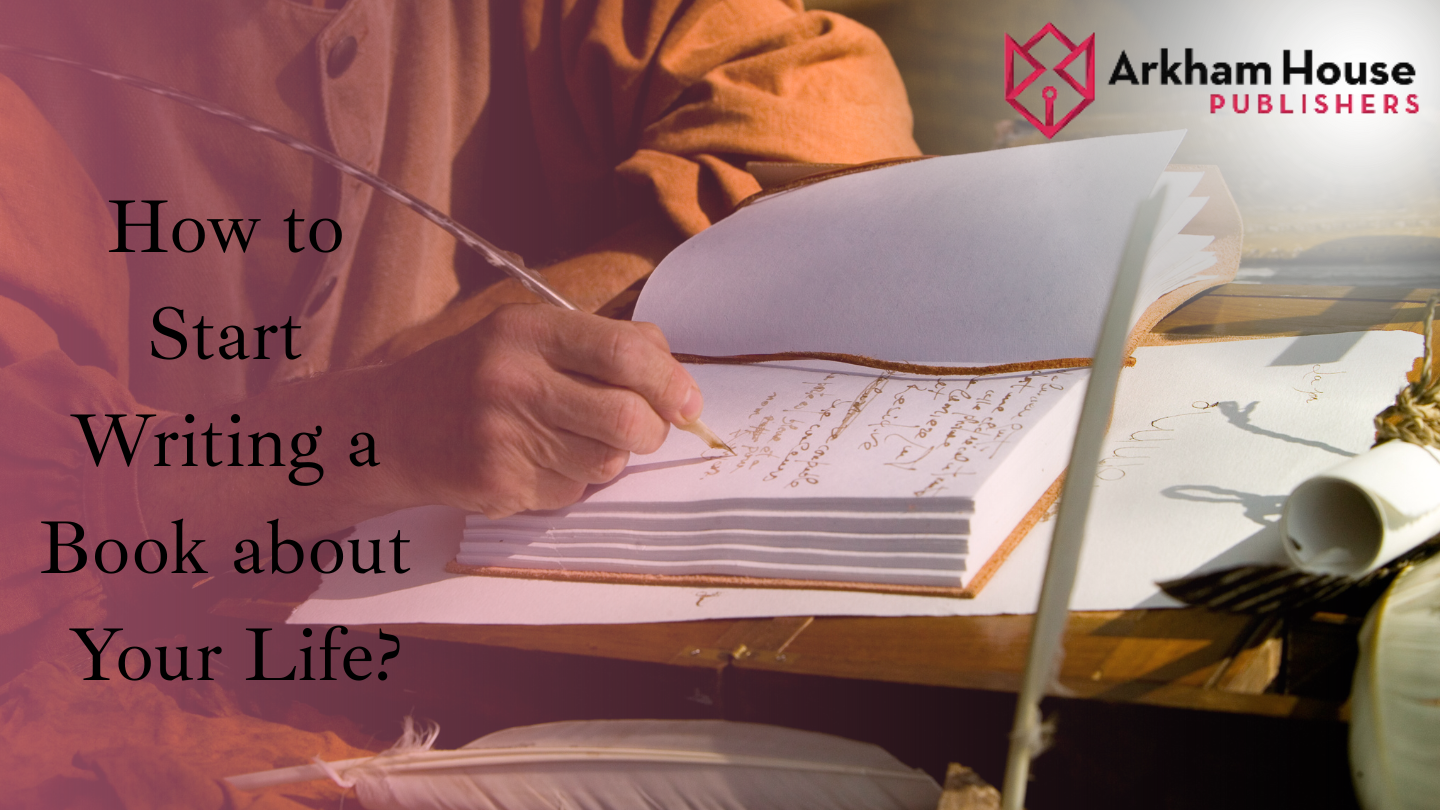Every life is a novel waiting to be written. Yours is no exception. Perhaps you’ve stood in bookstores admiring memoirs, thinking, “I have stories like that,” while a quiet voice whispers, “But where would I even begin?” This hesitation is universal.
The journey from memory to manuscript begins with a simple but profound realization: your ordinary moments contain extraordinary meaning.
Consider how Frank McCourt transformed his impoverished childhood into the Pulitzer Prize-winning Angela’s Ashes or how Cheryl Strayed turned personal devastation into the bestselling Wild. These authors didn’t start with extraordinary lives – they started with the courage to examine their ordinary experiences through a writer’s lens.
Why Struggling to Write a Book Might Be the First Step to Greatness
When you decide to start writing a book about your life, you’re not just putting words on paper. You’re engaging in an act of profound self-discovery, creating a legacy that could resonate across generations. The process may feel overwhelming at first – how to structure decades of memories, which details to include, what tone to use – but every great memoir begins with that same uncertainty.
This guide isn’t about quick formulas or superficial tips to write a book about your life. It’s about helping you uncover the natural shape of your story, teaching you how to recognize those pivotal moments that define a life’s narrative arc, and giving you the tools to transform scattered memories into compelling prose.
Whether you dream of reaching a wide audience or simply want to preserve your history for your family, the principles remain the same: authenticity matters more than perfection, truth resonates deeper than embellishment, and your unique perspective is what will make your story sing.
Let’s begin where all great stories start – with that first sentence, that first memory, that first moment of clarity when you realize: “This is worth telling.”
Why & Where to Start Writing a Book?
Before pen meets paper, every great life story begins with intention. The questions “Where to start writing a book” or “Why to start writing a book?” are less about the first sentence and more about understanding your core purpose. Are you writing to heal old wounds, preserve family history, or inspire others with your journey? This clarity becomes your compass.
Key considerations:
- Your “Why”: Legacy projects often focus on family, while memoirs may target personal catharsis.
- Format: Autobiographies span a lifetime; memoirs zoom into transformative periods; biographies let others tell your story.
- Audience: Writing for grandchildren demands a different language than a public memoir.
- Scope: Will this cover a decade or one pivotal year?
These decisions shape everything from tone to structure.
Choosing Your Book’s Structure
Autobiography vs. Memoir vs. Themed Biography
Your structure depends on scope and perspective:
|
Type |
Scope | Best For | Example |
| Entire life (birth-present) | Public figures, legacy projects |
The Story of My Experiments with Truth (Gandhi) |
|
| Focused period/theme | Emotional journeys, transformations |
Wild (Cheryl Strayed) |
|
| Biography | Someone else’s life | Historical figures, family tributes |
Steve Jobs (Walter Isaacson) |
Arkham House Publishers often guides authors in picking the right format for marketability and emotional impact.
The Step by Step Process to Writing a Book
Once decide on your “type” of a book, then the next step is the writing process. The journey from memories to manuscript becomes manageable when broken into actionable steps for writing a book. Here’s your roadmap to crafting a compelling life story:
Step 1: Brainstorming Your Life Story
Begin by mining your memories. Set aside judgment and free-write for 15 minutes daily no editing, just raw recollections. Alternatively, create a timeline of your life, noting pivotal moments (a career shift, a loss, an unexpected joy). Notice how some events connect thematically rather than chronologically; these threads often reveal your book’s core message.
Step 2: Research & Memory-Jogging
A life story gains depth with context. Interview family or friends who shared key moments their perspectives might reshape your understanding. Dig into old photos, journals, or social media posts; a single image can unlock forgotten details (the smell of your grandmother’s kitchen, the texture of your first uniform). These artifacts transform vague memories into vivid scenes.
Step 3: Structure Your Story Like a Masterpiece
Every unforgettable life story hinges on its architecture. Imagine your book as a winding road through your most defining landscapes the peaks of triumph, valleys of despair, and quiet stretches of reflection. For chronological narratives, consider how Tara Westover’s Educated moves deliberately from her isolated childhood to scholarly awakening. If themes drive your story, structure it like The Glass Castle, where each section explores a facet of resilience (hunger, creativity, betrayal).
Test different frameworks by writing vignettes: a single afternoon that altered your worldview or a decade compressed into its essence. The right structure won’t just organize events it’ll reveal hidden connections between your past and present self.
Step 4: Find Your Narrative Voice
Your voice isn’t just what you say it’s how you say it when you’re too tired to pretend. To uncover yours, try writing the same memory three ways: as a late-night confession to an old friend, a courtroom testimony, and a fairy tale. Notice which version feels most alive. Memoirs like Born a Crime thrive on Trevor Noah’s wit, while When Breath Becomes Air gut-punches with Paul Kalanithi’s surgical precision.
A voice emerges in quirks: run-on sentences that mirror racing thoughts, fragments for punch, or lyrical metaphors that crystallize emotions. If you stumble, read your work aloud. The sentences that trip your tongue likely need trimming; the ones that give you chills? That’s your voice.
Step 5: Write the Damn First Draft
The first draft is where perfectionism goes to die and that’s glorious. Start with the scene that haunts or humors you most, even if it’s from the middle of your story. Describe it like you’re reliving it: the blistering sun on your neck during that fateful job interview, the way your stomach dropped when the phone rang at 3 AM. Dialogue should sound like real speech interruptions, half-finished thoughts, and all. When stuck, borrow Anne Lamott’s trick: write a “shitty first draft” letter to yourself (“This is about Mom’s illness, but I’m avoiding the hospital part…”). Momentum matters more than polish here. Some days, you’ll mine gold; others, you’ll slog through mud. Both are progress.
Step 6: Revise Like a Sculptor
Revision is where your story transforms from a diary into art. First, read your draft as if it’s a stranger’s work. Where do you skim? Where do you lean in? Those are your cuts and keepers.
Next, hunt for emotional truth: did you write “I was angry” or show fists clenching under the table? Finally, polish sentences until they gleam replace limp verbs (“walked slowly” → “trudged”), prune adverbs (“very tired” → “exhausted”), and ensure every chapter ends with a question or revelation that pulls readers forward.
For objectivity, wait a week between edits or trade manuscripts with a fellow writer. Remember: a memoir isn’t a court transcript. It’s your truth, honed to its most resonant core.
Overcoming Writing Struggles When You Write a Book About Your Life
Every writer faces roadblocks what matters is how you navigate them. If you’re struggling to write a book about your life, take comfort in knowing even legends like Stephen King have trashed entire drafts. That unfinished manuscript isn’t a failure it’s part of the process.
For emotionally charged scenes that freeze your fingers and trick your brain, write them as third-person anecdotes first (“She stood at the hospital door…”), then gradually shift to first-person when you’re ready. Perfectionism paralyzing you? Set a 15-minute timer and deliberately write the messiest version possible—what author Anne Lamott calls the “shitty first draft.” You’ll often mine gold from the rubble.
When struggling to write a book, ask yourself: “What’s the worst that could happen if I write this poorly?” The answer? You’ll fix it later. The words just need to exist first.
Pro Tips:
- Writer’s block fix: Change your environment (write in a café, park, or different room).
- Sensitive topics: Use placeholder names during drafts to maintain flow.
- Consistency: Track progress with a word-count chart or app like Streaks.
How to Start Writing a Book Online
The digital age offers game-changing tools for life-story writers. Platforms like Google Docs or Notion let you access your manuscript anywhere, while Otter.ai transcribes interviews with family members. Join online writing communities like Scribophile for feedback, or try Dabble for structured outlining. If you’re tech-wary, start simple: a password-protected blog can serve as a draft space with date-stamped entries.
Pro Tips:
- Backup religiously: Use cloud storage (Dropbox, iCloud) + a physical hard drive.
- Privacy: For sensitive stories, disable “edit history” in Google Docs.
- Distraction-free apps: FocusWriter or Cold Turkey Writer minimize interruptions.
Editing & Polishing Your Manuscript
Editing transforms your rough draft into a cohesive story. Begin with developmental edits, analyze your manuscript’s backbone. Does the narrative arc hold tension? Are there timeline gaps? Tools like Scribbr or AutoCrit can flag pacing issues. Next, line edits refine your prose. Hunt for passive voice (“The decision was made” → “I decided”), clichés (“heart skipped a beat”), and inconsistent tenses.
When to Hire a Professional Editor:
- Content/developmental editors: Best after your first draft.
- Copy editors: Ideal pre-publication for grammar/flow.
- Readers sensitivity analysis: Crucial for marginalized experiences.
Pro Tips:
- Read backward: to catch spelling errors your brain auto-corrects.
- Use text-to-speech: to hear awkward phrasing.
- Highlight dialogue in yellow: to ensure natural rhythms.
Arkham House Publishers offers manuscript assessments to pinpoint your editing needs.
Steps for Writing a Book with Publishing in Mind
When you are writing a book, you need to keep publication in mind. For example, how to share it with the world. Each publishing route offers distinct advantages depending on your goals, budget, and timeline.
Traditional Publishing: remains the gold standard for many authors, offering professional editing, design, distribution, and marketing support. The trade-off? It’s highly competitive (most big publishers only accept agented submissions), and the process takes 18-24 months from acceptance to bookshelf. Royalties typically range from 10-15% of retail price.
Self-publishing: through platforms like Amazon KDP or Ingram Spark puts you in complete creative control with faster timelines (3-6 months) and higher royalties (35-70%). However, you shoulder all costs from professional editing to cover design and marketing. This route works best for:
- Niche memoirs (family histories, specialized careers)
- Authors who want to retain all rights
- Those comfortable handling business aspects
Hybrid Publishing: the middle ground offered by companies like Arkham House Publishers – combines the quality of traditional publishing with the autonomy of self-publishing.
- Professional editing and design services
- Strategic distribution to bookstores and libraries
- Marketing guidance while you keep creative control
- Higher royalties than traditional publishing
Pro Tips:
- For traditional publishing, research agents who represent similar memoirs
- Self-publishing requires ISBN purchase (about $125 for a single title)
- Hybrid publishers should be vetted – ask for client references
The right choice depends on your vision. Want widespread bookstore distribution with industry validation? Traditional. Prefer speed, control, and higher profits? Self-publish. Desire professional support without relinquishing rights? Hybrid may be your sweet spot.
Arkham House Publishers offers free consultations to help evaluate which option aligns with your goals. Remember – there’s no “wrong” choice, only what’s right for your story and your readers.
Final Motivation: Your Legacy Awaits
Your life story is a torch to pass forward whether it lights the way for strangers or just your great-grandchildren. Start writing a book today with a single paragraph about the moment you felt most alive. The rest will follow.
Arkham House Publishers offers free 30-minute consultations to help you begin. Your story deserves to be told. Now, tell it.





